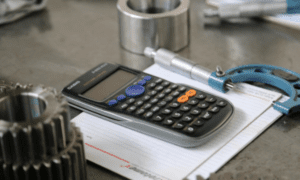Are you tired of fumbling through your wallet, desperately searching for loose change or the right credit card? Well, fret no more because contactless payment technology is here to revolutionize the way we make transactions. But hold on a second, it’s not just about convenience. In fact, this game-changing innovation also offers enhanced security measures that could have even James Bond impressed. So buckle up and get ready as we dive into the world of contactless payments and how they are paving the way for a safer and more secure future beyond mere convenience.
Introduction to Contactless Payment Technology
As the world progresses, so does the technology we use on a daily basis. As contactless payments become more popular, it’s important to understand how they work and what makes them more secure than traditional methods like cash or credit cards.
Contactless payment technology uses Near Field Communication (NFC) to allow customers to make transactions without physically swiping or inserting their card into a reader. Instead, customers simply hold their card or mobile device near an NFC-enabled reader and the transaction is processed wirelessly.
This type of technology offers enhanced security beyond convenience since it eliminates the need for customers to hand over their credit card or enter their PIN number into a keypad, which could be compromised. In addition, contactless payments are often processed using EMV chip technology, which is even more secure than traditional magnetic stripe cards.
Contactless payments offer a convenient and secure way to pay for goods and services. If you’re not already using this type of payment method, it’s worth considering as an option for your next purchase.
What is Contactless Payment and How Does It Work?
Contactless payments are made using NFC (Near Field Communication) technology. When you make a contactless payment, your card sends out a signal that interacts with the terminal at the point of sale. The terminal then reads your card information and processes the payment.
One of the advantages of contactless payments is that they’re more secure than traditional methods like cash or check. With contactless payments, your card never leaves your hand, which reduces the risk of it being lost or stolen. Additionally, when you make a purchase with a contactless card, you usually have to enter a PIN or sign a receipt, so there’s an extra layer of security there as well.
Another advantage of contactless payments is that they’re very convenient. You don’t have to fumble around with cash or wait for your card to be processed – you can just tap and go! This convenience has made contactless payments very popular in recent years.
If you’re interested in trying out contactless payments, all you need is an NFC-enabled credit or debit card from a participating bank. Just look for the contactless symbol at the point of sale, and hold your card up to the terminal to pay. It’s that easy.
Pros and Cons of Contactless Payments
There are many reasons to consider using contactless payments, but there are also a few potential drawbacks to be aware of. Though, the Pros definitely outweigh the Cons when it comes to this type of payment technology.
PROS:
1. Increased Security: One of the biggest advantages of contactless payments is that they offer enhanced security features beyond what is available with traditional methods like cash or credit/debit cards. For example, most contactless cards come with an encrypted chip that helps to protect your personal information from being compromised if your card is lost or stolen. Additionally, many card issuers now offer fraud monitoring services that can help to quickly identify and resolve any suspicious activity on your account.
2. Convenience: Another big selling point for contactless payments is the convenience factor. With a quick tap of your card or smartphone, you can make purchases without having to fumble around for cash or wait for your card to be processed. This can save valuable time, especially when you’re in a rush or making multiple purchases in one transaction.
3. growing acceptance: Another key advantage of using contactless payments is that their acceptance is rapidly growing worldwide. In addition to being accepted at an increasing number of retailers (including many major chains), you can also use them for public transit fares in major cities like London, New York, and San Francisco . This means that you can rely on them for more of your everyday needs and have less need to carry cash or traditional cards.
CONS:
1. Limited Acceptance: One downside of contactless payments is that their acceptance still trails behind more traditional payment methods such as electronic payments, checks, and gift cards. While this gap is slowly closing, there are still plenty of vendors and businesses that have yet to accept contactless payments as a form of payment. It’s important to bear this in mind when you’re on the go.
2. Higher Fees: Another potential drawback of contactless payments is the associated fees that come with them. As these transactions require extra processing steps (such as encryption), the card issuers often charge slightly higher fees for each purchase than those associated with traditional methods like cash or plastic cards . As such, it’s important to weigh up whether the convenience factor justifies these costs before making your decision.
3. Potential For Misuse: Finally, one potential downside of contactless payment security is that it can be subject to misuse if not managed properly. For example, if your card or device becomes lost or stolen, anyone could use it without needing special access codes or PIN numbers in order to complete their purchase – leaving you liable for any charges made with it. It is therefore essential to take extra precautions to protect your contactless payment devices from misuse.
Benefits of Contactless Payments: Enhanced Security, Quick Transactions and Increased Accountability
One of the primary benefits of contactless payments is the enhanced security that they offer. Contactless payments use advanced encryption technologies that make it extremely difficult for criminals to intercept and misuse personal information. In addition, contactless payments are typically processed through secure channels that provide an additional layer of protection.
Another benefit of contactless payments is the quick transaction times. Because there is no need to swipe a card or enter a PIN, contactless transactions can be completed in just a few seconds. This is particularly convenient for busy shoppers who want to avoid long lines at checkout.
Contactless payments can help to increase accountability and transparency in the retail environment. When customers pay with a credit or debit card, their purchase history is typically stored on the card issuer’s servers. This makes it difficult for retailers to track customer spending patterns and identify potential fraudsters. However, when customers use contactless payments, their purchase history is typically stored on the retailer’s own servers. This gives retailers more visibility into customer behavior and helps to prevent fraudulent activity.
Common Risks Associated with Contactless Payment Technologies
The use of contactless payment technology is growing in popularity, particularly in developed countries where shoppers are looking for faster and more convenient ways to pay for their purchases. However, as with any new technology, there are associated risks that must be considered before using these systems.
One of the most common risks associated with contactless payments is the potential for fraudulent activity. While the actual process of making a contactless payment is very secure, criminals can still access personal information if they are able to intercept the signal between the card and the reader. In addition, if a contactless payment device is lost or stolen, there is a risk that the criminal could use it to make unauthorized charges.
Another risk to consider is data breaches. If a hacker gains access to the database of a company that processes contactless payments, they could potentially access sensitive customer information such as credit card numbers and expiration dates. This type of breach can lead to identity theft and other financial crimes.
It’s important to be aware that contactless payments are not always accepted everywhere. Some retailers may not have the proper equipment to accept these types of transactions, so it’s important to check beforehand. In addition, some government agencies and public transportation systems do not yet accept contactless payments.
Regulations for Implementing Secure Payments through Contactless Technology
The current pandemic has seen a dramatic increase in the use of contactless payments as people look for ways to minimize contact and avoid handling cash. But what exactly is contactless payment technology, and how does it offer enhanced security beyond convenience?
Contactless payments are made through NFC (Near Field Communication) technology, which allows two devices to communicate when they are close together. When you make a contactless payment, your credit or debit card is passed near an NFC-enabled terminal. The terminal reads the card’s information and processes the payment.
There are many benefits to using contactless payments, including enhanced security. Here are some of the ways that contactless payments offer enhanced security beyond convenience:
1. Contactless payments reduce the risk of fraud.
When you use a contactless payment, your card never leaves your hand, which reduces the opportunity for fraudsters to skim your card information or intercept your card during transit. In addition, each transaction is accompanied by a unique code that is generated by your card’s chip, making it difficult to duplicate or counterfeit.
2. Contactless payments are more secure than traditional magnetic stripe cards.
Magnetic stripe cards are easy to clone because the data on the stripe is static. Contactless cards, on the other hand, generate a unique code for each transaction that cannot be duplicated or counterfeited. This makes them much more secure than traditional magnetic stripe cards.
3. Contactless payments can be used with multiple layers of authentication.
Due to the unique code generated during each transaction, contactless payments can be used in conjunction with other authentication methods like biometrics, two-factor authentication, or even facial recognition. This makes them more secure than traditional payments.
4. Contactless payments are faster and easier than cash or check transactions.
Contactless payments allow you to make purchases quickly and easily, without having to worry about counting out cash or writing a check. Plus, because there is no physical exchange of money involved, it eliminates the risk of someone stealing or counterfeiting your currency.
5. Contactless payments offer improved privacy protections.
The data on a contactless card is encrypted so that only authorized personnel can access your information. Additionally, by using a contactless payment system, you don’t have to worry about inadvertently disclosing your personal information when making purchases – all you have to do is tap your card against the terminal and you’re done.
These are just some of the ways that contactless payment technology offers enhanced security beyond convenience. As society becomes increasingly digitized, contactless payments offer a secure and easy way for consumers to make their purchases without worrying about the potential for fraud or identity theft.
Conclusion
Ultimately, contactless payment technology is offering people an easier and safer way to pay. With this technology, users can be sure that their information stays secure while they enjoy the convenience of making payments in seconds. Beyond enhanced security, contactless payments also provide fast and efficient transactions that are convenient for both merchants and customers alike. So next time you’re out shopping, give this form of payment a try – I guarantee you won’t regret it.



































